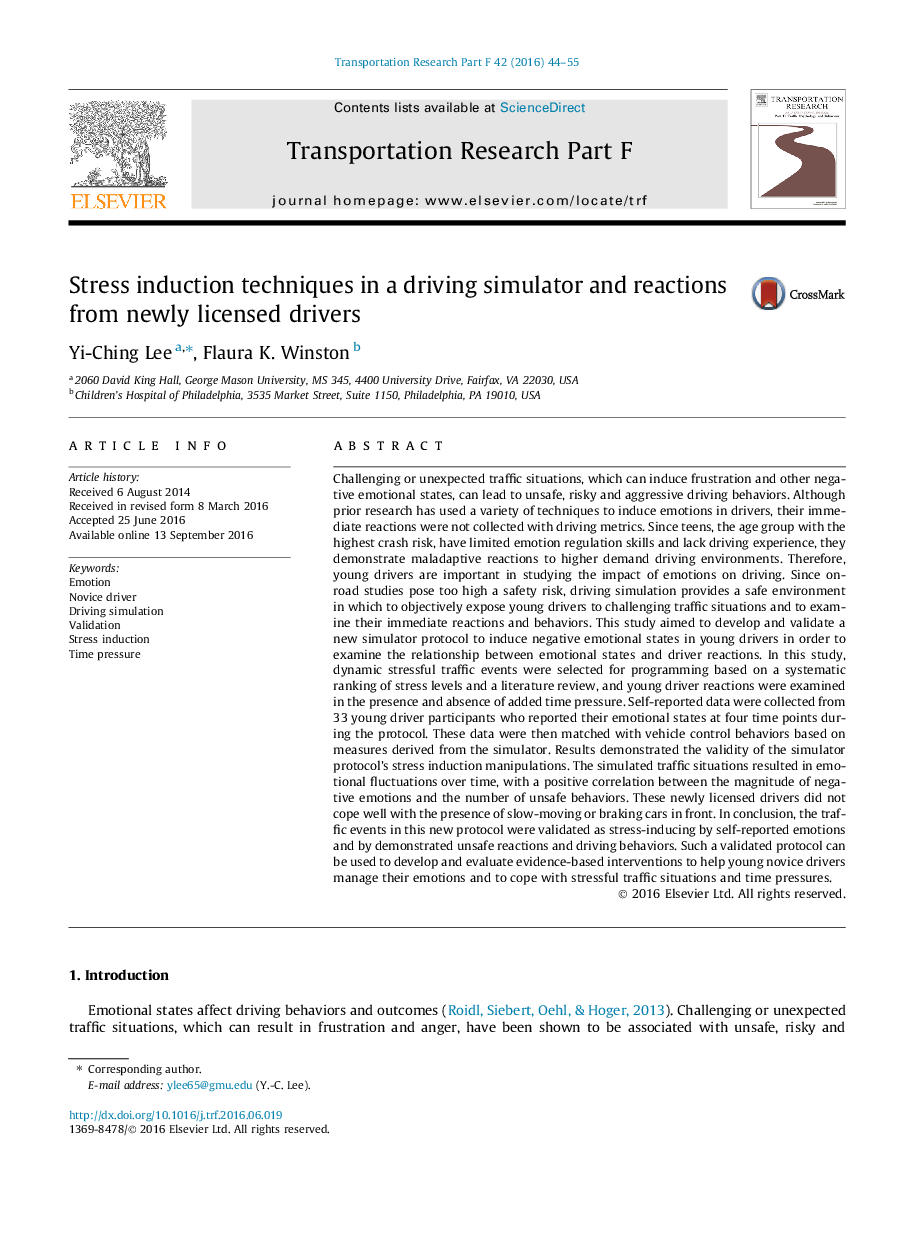| کد مقاله | کد نشریه | سال انتشار | مقاله انگلیسی | نسخه تمام متن |
|---|---|---|---|---|
| 5037356 | 1370218 | 2016 | 12 صفحه PDF | دانلود رایگان |
• We design and validate a stress-inducing driving simulator protocol.
• Newly-licensed drives are affected emotionally and behaviorally by stressful traffic events.
• There is a positive correlation between magnitude of negative emotions and unsafe behaviors.
• Slow-moving cars in front lead to higher levels of negative emotions.
Challenging or unexpected traffic situations, which can induce frustration and other negative emotional states, can lead to unsafe, risky and aggressive driving behaviors. Although prior research has used a variety of techniques to induce emotions in drivers, their immediate reactions were not collected with driving metrics. Since teens, the age group with the highest crash risk, have limited emotion regulation skills and lack driving experience, they demonstrate maladaptive reactions to higher demand driving environments. Therefore, young drivers are important in studying the impact of emotions on driving. Since on-road studies pose too high a safety risk, driving simulation provides a safe environment in which to objectively expose young drivers to challenging traffic situations and to examine their immediate reactions and behaviors. This study aimed to develop and validate a new simulator protocol to induce negative emotional states in young drivers in order to examine the relationship between emotional states and driver reactions. In this study, dynamic stressful traffic events were selected for programming based on a systematic ranking of stress levels and a literature review, and young driver reactions were examined in the presence and absence of added time pressure. Self-reported data were collected from 33 young driver participants who reported their emotional states at four time points during the protocol. These data were then matched with vehicle control behaviors based on measures derived from the simulator. Results demonstrated the validity of the simulator protocol’s stress induction manipulations. The simulated traffic situations resulted in emotional fluctuations over time, with a positive correlation between the magnitude of negative emotions and the number of unsafe behaviors. These newly licensed drivers did not cope well with the presence of slow-moving or braking cars in front. In conclusion, the traffic events in this new protocol were validated as stress-inducing by self-reported emotions and by demonstrated unsafe reactions and driving behaviors. Such a validated protocol can be used to develop and evaluate evidence-based interventions to help young novice drivers manage their emotions and to cope with stressful traffic situations and time pressures.
Journal: Transportation Research Part F: Traffic Psychology and Behaviour - Volume 42, Part 1, October 2016, Pages 44–55
